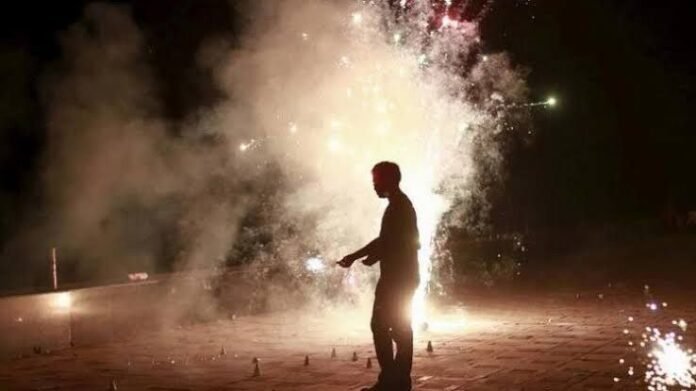Diwali celebration happened everywhere recently and Delhi has once again earned the title of being the most polluted city in the world. Following a night of relentless firecrackers and explosions, the capital witnessed an air quality emergency showcasing severe health issues that can occur because of poor air quality index. Although there was government ban on the production, sale, and use of crackers until New Year’s Day, yet due to diwali celebrations, air quality degraded and residents woke to heavy, smog-filled air and hazardous pollution levels, making headline about city grappling with extreme pollution level like every winters.
Next day after Diwali when the AQI was recorded, everyone was in shock. The Swiss air quality monitoring firm recorded an AQI of 348 for Delhi and listed the air as hazardous for everyone residing in captial and nearby.
Among the different areas in Delhi, RK Puram, Jahangirpuri, Okhla, Patparganj and Nehru Nagar showed PM2.5 levels ranging from 800 to 900 mg (micro grams) per cubic meter. This exceeded the safe limit of 60 micrograms.
Talking to True to Life News, resident of Rk Puram, Tarun mentioned how even after greenery in the entire area, lots of trees, they are still facing difficulty in breathing. He came to Delhi to pursue his higher education but never thought that it would be so difficult for him due to pollution. Continuous itching in eyes and layer of smog is creating issue for several other people residing in the area.
Delhi’s Environment Minister, Gopal Rai, however, thanked residents for what he described as “largely refraining from bursting firecrackers.” In a statement, he thanked residents by saying thankyou for the responsible actions of many residents who avoided use of crackers. He said although the condition of capital is hazardous according AQI data or the smog that has blanketed the capital, yet the efforts of some people is really appreciable.
Delhi’s struggle with hazardous pollution even after ban on firecracker is not new. Ban introduced in 2017 as a preventive measure against air pollution after festival, but it has been widely ignored since then.
Many people cite the emotional and cultural significance of fireworks during Diwali, arguing that this form of celebration is a deep-rooted tradition. For such families and communities, lighting firecrackers signifies the joyful occasion of Diwali, and bringing a change in this practice seems quite difficult, especially for them who feel it is a one-day event worth this compromise.
This continous tension between tradition and environmental health gets discussed every year. Talking to True to Life News, Neha Sharma, a Delhi resident and mother of two, shares her opinion by saying that it is a matter of tradition for us and although she understands that pollution is a big concern for everyone, yet it would be quite unfair to ask everyone to stop this completely, that too on one of the biggest festival of the year.
Despite high efforts to keep a ban on firecrackers, people could easily buy it through unofficial means and celebrated diwali with firecrackers. Hence, authorities face this dual challenge of prevention from illegal sales and also convincing the public to adopt green crackers and eco friendly lights.
Even without Diwali fireworks, Delhi’s air quality has been recorded as poor from October to December, may be because of a mix of traffic emissions, industrial pollutants, or seasonal agricultural fires. As winter arrives, temperatures drop, pollutants become trapped closer to the ground, leading to the development of thick smog that severely impacts air quality and becomes hazardous for health. Diwali’s fireworks thereby add to the toxic mix, creating a peak pollution period that lead the city’s air into a toxic health situation.
